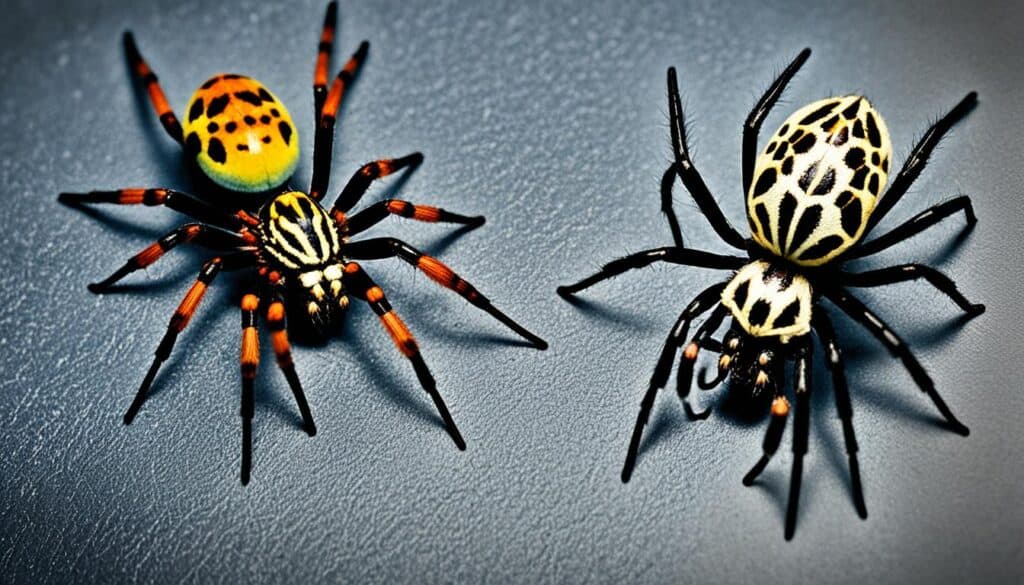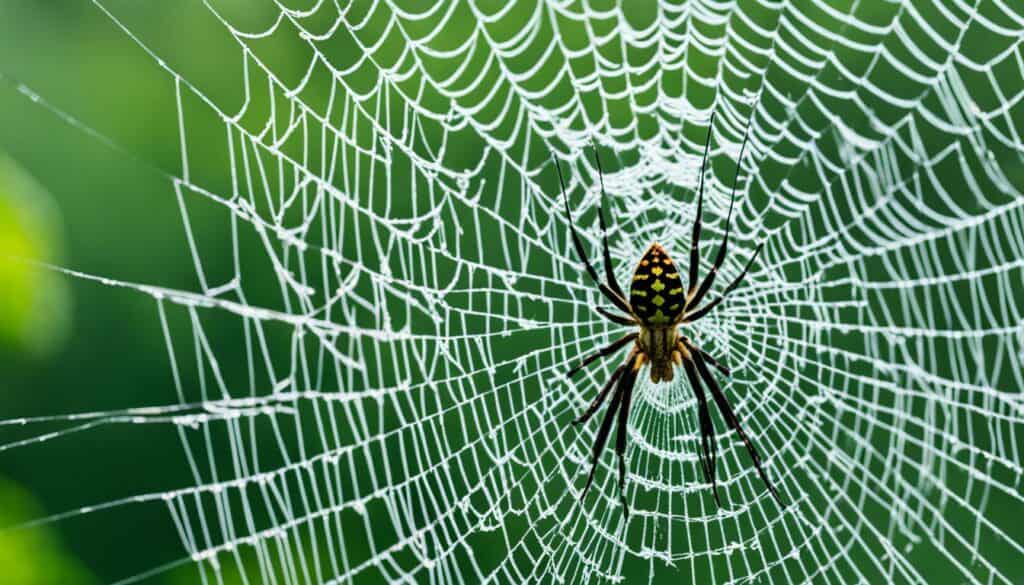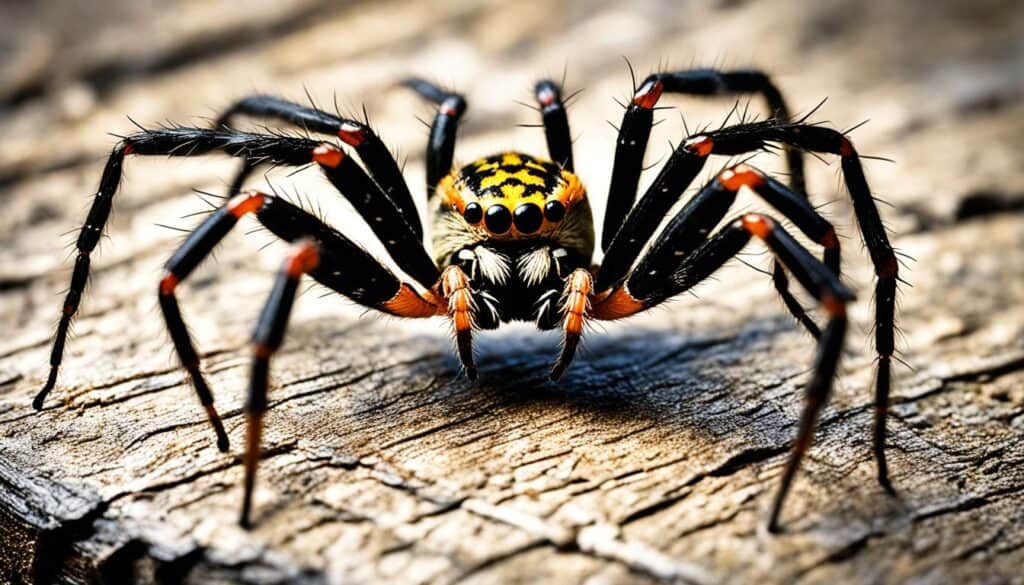Here’s a surprising fact: There’s about 2 Joro spiders per yard in some places. Imagine 50 of them within just a 94-yard area. Originally from Asia, they’ve spread their colorful webs across the southeastern U.S., hitting states like Georgia and South Carolina. Their territory now covers over 120,000 square kilometers. How do they compare to other spiders? Who’s going to win in this epic ecosystem showdown? It’s time to step into the world of these fascinating creatures.
Key Takeaways:
- The Joro spider could be considered an invasive species, now present across multiple states, including Georgia, South Carolina, North Carolina, and Tennessee.
- These spiders were first discovered in North Georgia in 2014 and have rapidly spread, now even reaching parts of the Midlands in South Carolina.
- With their vibrant yellow and blue-black markings, Joro spiders are easily identifiable in contrast to native spiders like the Golden Silk Orb Weaver.
- Joro spiders exhibit “ballooning” as a primary dispersal method, enabling wide geographic spread.
- Estimates show a concerning density of approximately 2 Joro spiders per yard, raising questions about local ecosystems’ impact.
- Pesticides are effective, but physical removal with a stick or broom is recommended for controlling Joro spider populations.
- The presence of Joro spiders can displace native spider species, indicating a significant influence on biodiversity.
Stay tuned as we dive into what makes Joro spiders so unique. We’ll look at their traits, behaviors, and the impact they have. It’s an ultimate battle not to be missed!
Introduction to the Joro Spider and Its Rivals
If you’ve ever seen a Joro spider, you might have felt amazed yet a bit scared. These spiders come from Japan but are now seen on the East Coast of the U.S. They stand out with their big webs and bold colors.
Joro spiders are kin to the Golden Silk Orb Weaver, which can confuse some people. It’s like not recognizing a cousin at a big family get-together. But, if you look closely, Joro spiders are easy to spot. Their yellow and blue-black patterns are distinctive.
These spiders getting noticed has everyone talking, especially about their effect on local species. Joro spiderlings can “balloon,” traveling far with the wind. Imagine them drifting into an open car window!
Joro spiders mainly eat bugs caught in their webs without much impact on other wildlife for food. Their bite might itch or cause a minor allergic reaction. But it’s nothing serious.
With their eye-catching looks and growing numbers, Joro spiders are stirring up conversations on the East Coast. They seem to like the climate, spreading from Georgia to Baltimore. People are both curious and a bit wary of these colorful new arrivals.
Appearance and Size: A Visual Comparison
If you’ve ever been curious about how to tell a Jorō spider from other spiders, look no further. It all comes down to their size and colors. Let’s explore the visual differences.
The adult female Jorō spider is quite large. She can be an inch long with a leg span up to 4 inches. Her bright yellow and black markings stand out. This contrasts with her lightly colored upper body. The male Jorō spider is less eye-catching, being just 0.3 inches long. He seems to think flashy colors aren’t necessary.
The Golden Silk Orb Weaver is also a standout in the spider community. Female spiders of this type can be 1.5 to 2 inches long. Their legs can stretch over 5 inches. They have distinct hairy patches and shiny gold bellies with yellow spots. Yet, they prefer their webs high up, like penthouses of the spider world.
In contrast, Garden Spiders seem like the smaller relatives at a spider family gathering. They can be up to an inch long with a 2.5-inch leg span. Despite being smaller, their bodies are covered in dense, shiny hair for extra flair.
Jorō spiders came from East Asia and are now spreading across North America. A 2023 study by Clemson University found that they might overpower native spiders. This could really change the local spider scenes.
Next time you spot a large, low-hanging web with a boldly colored spider, it’s likely a Jorō spider. You’ll know it’s making its mark in our world, spinning its story one web at a time.
Web-building Skills: Masters of Silk-Spinning
Imagine stringing up a hammock with threads strong enough to hold your weight. Meet the Golden Silk Orb Weaver and the Joro spider, true experts in silk-spinning. They show us what amazing web-building skills look like.
The Golden Silk Orb Weaver has a body up to 2 inches long and an even bigger leg span. It spins huge orb-shaped webs that can be several feet across. These aren’t just any webs; they’re like works of art that catch large insects, including butterflies and grasshoppers. The strength of their golden silk makes them incredible builders.
The Joro spider is smaller, with females about 0.7 to 1.2 inches long. Yet, they’re just as skilled at spinning silk. Living in Japan, they make their webs low to the ground, catching smaller prey. They’ve even started living on the East Coast of the U.S., adding to the web-building community.
Golden Silk Orb Weavers sometimes live together in big groups. They help each other build their huge webs. It’s a team effort. On the other hand, Joro spiders make their own webs but stay close to each other. They’re like neighbors who like their own space but watch over one another.
Both types of spiders help control insect populations with their webs. These webs are crucial for keeping ecosystems balanced. They’re also of great interest to scientists studying how spiders and their webs have evolved over 150 million years. Spider silk and web-building have a long history that’s still being explored today.
So, when you see a spider web catching the light, take a moment to appreciate these architects of nature. They’re not just bugs; they’re master builders in their own right.
Hunting Strategies in the Spider World
Spiders have some wild hunting strategies. It’s almost like a nature show with David Attenborough, yet all about spiders. Take the Joro spider as an example. These creatures are masters in hunting techniques, standing out among others. Their methods include orb-weaving, stalking, burrowing, and ambushing, showcasing their expertise in catching prey.
Then there’s the Golden Silk Orb Weaver. It prefers to set up a strong web and wait. With its significant size and strength, it can easily catch and subdue its prey. This spider acts like a pro in trapping and overpowering its victims.
The Joro spider has another trick up its sleeve. Even though its web is delicate, its bite is lethal. Once its prey is caught, it uses venom to quickly handle the situation. This shows its effectiveness in managing insect populations.
The varied behavior of these spiders is intriguing, especially when considering their ecosystem roles. Both contribute crucially to controlling insect numbers, helping maintain ecological balance. It’s like they are nature’s own pest control champions. And this battle helps everyone (except the insects).
Joro Spider vs. Other Spiders: Social and Environmental Impact
If you thought the Joro spider’s vibrant colors and big webs were impressive, there’s more. They’ve made a big splash in the U.S. since 2013, especially in Georgia and the Southeast. But what does this mean for local spiders?
The Joro spider’s metabolism is almost twice as high as its relatives. Plus, they have a 77% higher heart rate. This means they’re really good at dealing with cold, unlike other spiders. It’s not just a cool trick; it shows how tough they are as newcomers.
When it comes to spreading, young Joro spiders are experts. They use the wind to fly to new places, showing off their survival skills. Their ability to handle cold and their homelike new habitats have helped them explore new areas easily.
Humans have accidentally helped Joros travel even further. They hitch rides on ships or with travelers, landing in the U.S. by chance. It’s like they’re looking for the American Dream.
What does this mean for local spider populations? Will the Joro spiders take over? The ecosystem might change due to them. For now, their effect on the environment is quite noticeable.
Distribution and Spread: Where are Joro Spiders Now?
Joro spiders come from East Asia but like the U.S. too. They snuck in on ships from Japan, China, Taiwan, or Korea around 2013 or 2014. That was quite the surprise to me!
They were first seen in North Georgia and South Carolina. But they didn’t stop there. Thanks to their ability to handle cold, they’re moving up the East Coast. They use a cool trick called ‘ballooning’ to let the wind carry them for miles. I wish my trips were that easy!
Now, you can find these spiders in Alabama, Maryland, Oklahoma, and West Virginia. They could travel across 120,000 kilometers in many states. Their journey shows how well they adapt to new places.
The impact of these spiders on ecosystems is fascinating. The University of Georgia found out they eat bugs other spiders ignore. They might be helping more than harming.
Their spread raises questions about them being an invasive species. Climate change and human travel might help them spread even more. We’ll see what happens, but these tough spiders aren’t going anywhere soon.
Human Interaction: Should We Be Worried?
Let’s admit it, a morning dog walk becomes intriguing with a Joro spider web in your path. These spiders from East Asia are now found in Atlanta, the Carolinas, and even Baltimore. But do we need to change our morning routines because of them?
It’s time to separate fact from fiction about Joro spiders. Even though their name sounds scary, they’re not dangerous to us. Their venom is mild, comparable to a small paper cut. At worst, a bite could cause itching or an allergic reaction. But, they pose no public health threat.
Joro spiders feast mainly on insects caught in their large webs. Their unique “ballooning” method helps them spread quickly. These spiders can make webs up to 12 feet wide. Their webs are stunning rather than scary.
Considering control and prevention, think of it as a small battle against bugs, not spiders. Joro spiders aren’t a big threat to other pests or the ecosystem. They’re invasive but manageable and don’t need drastic measures against them.
Using a flamethrower on Joro spiders is extreme and unnecessary. Usually, leaving their webs alone and avoiding killing them is enough. No need for public health alerts over these spiders. Let’s appreciate their presence in August and September without fear.
Conclusion
Who knew spiders could be so captivating, right? The journey of the Joro spider from Asia to the Southeast U.S. is impressive. They were first seen in Georgia in 2013. Now, they are all over, traveling like tourists.
These spiders aren’t a danger to us or our pets. There’s no proof they cause harm. So, no need to worry about your garden turning into a horror scene.
These colorful spiders can handle the cold better than their cousins. And, the size difference between male and female Joros is astonishing. It’s incredible seeing tiny males compete in the large webs of females.
Their strong silk has caught the eye of biotech researchers. They’re interested in it.
Learning about these spiders shows they’re not a big threat to ecosystems. Their webs and social habits are worth studying. It’s about how they fit in, not fighting other spiders.
So, we should watch them and learn. Who knows? You might get a great photo. They’re surprisingly good-looking for spiders!




